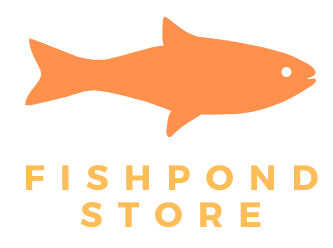Have you ever dreamed of having your very own pond filled with vibrant and captivating fish? If so, you may have wondered, “What are the easiest fish to keep in a pond in USA?” Today, we will explore the fascinating world of pond fish, unraveling the secrets to finding the perfect species that will thrive in your pond with ease.
From the lively and colorful koi to the hardy and resilient goldfish, we will dive into the diverse options available to help you create the pond of your dreams. So sit back, relax, and let us guide you on this exciting journey to discover the easiest fish to keep in a pond in the USA.
Goldfish
Overview of Goldfish
Goldfish are one of the most popular types of fish kept in ponds in the USA. They are known for their vibrant colors, graceful swimming patterns, and easy maintenance. Goldfish belong to the carp family and come in a variety of sizes, shapes, and colors. They have been domesticated for over a thousand years, and their popularity continues to grow.
Habitat Requirements
When it comes to their habitat requirements, goldfish are fairly adaptable. They can thrive in various conditions, but there are a few key factors to consider. Goldfish require a pond that is at least 1000 gallons in size, with a depth of at least 2-3 feet. The larger the pond, the better it is for the fish. They also prefer ponds with plenty of vegetation, such as water lilies or water lettuce, as these provide shade and hiding places for the fish.
Feeding Goldfish
Feeding goldfish is relatively simple. They are omnivorous and can eat a variety of food, including pellets, flakes, and live or frozen foods. It is important to feed them a balanced diet to ensure their health and growth. Commercially available goldfish food often contains a mix of plant and animal proteins, which is ideal for their diet. It is recommended to feed them twice a day, only giving them an amount that they can consume within a few minutes.
Maintenance and Care
Taking care of goldfish in a pond requires regular maintenance. It is essential to monitor water quality regularly, as high ammonia and nitrate levels can be harmful to the fish. Regular water changes, checking the pH levels, and using a pond filter are all important steps in maintaining a healthy environment for goldfish. Additionally, regularly inspecting the pond for any signs of disease or parasites is crucial. If any issues arise, it is recommended to seek assistance from a veterinarian experienced in fish care.
Popular Goldfish Varieties
Goldfish come in a wide variety of colors and shapes, making them highly sought after by pond enthusiasts. Some popular goldfish varieties include:
- Common Goldfish: This is the most basic and widely recognized variety, typically in shades of orange and red.
- Comet Goldfish: These goldfish have a longer and more slender body compared to the common goldfish and are known for their graceful swimming patterns.
- Shubunkin: These goldfish have a calico-like pattern with a mix of colors such as red, orange, blue, and black.
- Fantail Goldfish: This variety has a distinct double tail and a rounder body shape compared to other goldfish.
- Oranda Goldfish: Orandas have a prominent growth on their heads called a wen, which can give them a unique appearance.
Goldfish are a great choice for beginners and experienced pond enthusiasts alike, as they are hardy and relatively easy to care for.
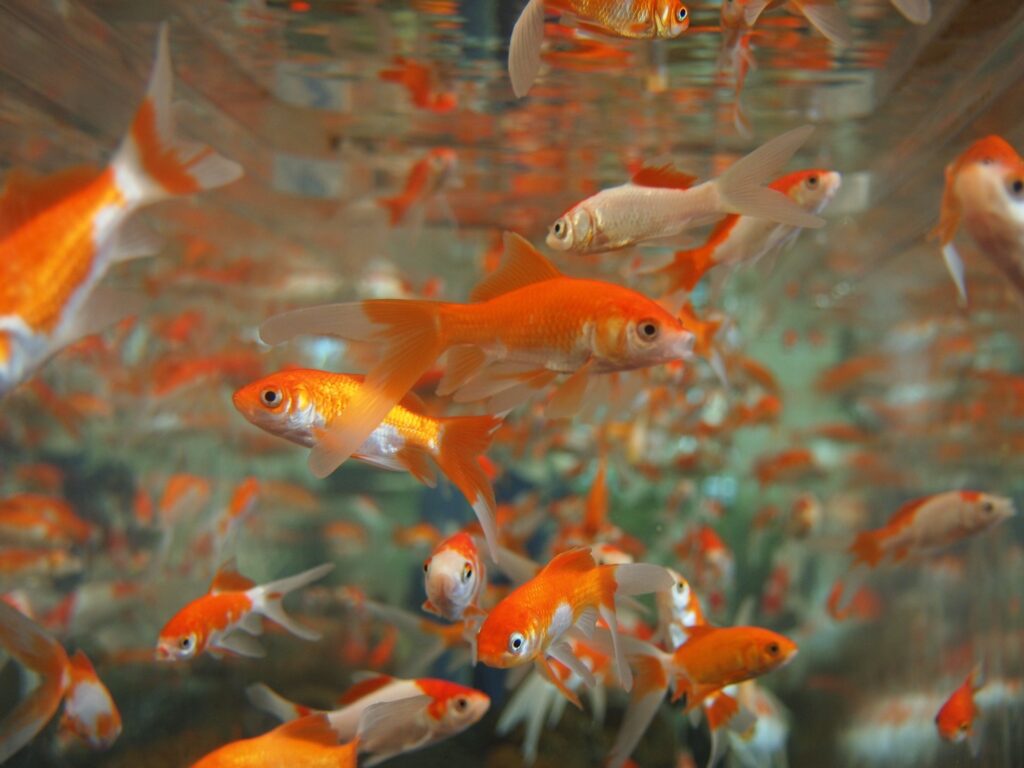
Koi
Overview of Koi
Koi fish have been a symbol of beauty and tranquility in Japanese culture for centuries. They are known for their vibrant colors, ornate patterns, and friendly nature. Koi are a type of carp, specifically bred for their unique and striking appearances. Keeping koi in a pond is a popular hobby among pond enthusiasts in the USA.
Habitat Requirements
koi fish require larger ponds compared to goldfish due to their size. Ideally, the minimum recommended pond size for koi is 3000 gallons, with a depth of at least 3-4 feet. This allows them to swim and grow comfortably. Koi also prefer ponds that provide plenty of shade and hiding spots, such as rocks, caves, or aquatic plants like water lilies.
Feeding Koi
Feeding koi is similar to feeding goldfish. They are omnivorous and will eat a variety of food, including pellets, flakes, vegetables, and live or frozen foods. It is important to provide a balanced diet to maintain their health and vibrant colors. Koi food is specifically formulated with the right blend of nutrients for their dietary needs. As with goldfish, it is recommended to feed them twice a day, only giving them an amount that they can consume within a few minutes.
Maintenance and Care
Proper maintenance and care are crucial to keeping koi fish healthy and thriving. Regular water quality testing is essential, as high ammonia and nitrate levels can be harmful to koi. It is recommended to use a pond filter system to maintain clean water. Additionally, maintaining the proper temperature, pH balance, and oxygen levels in the pond are important factors to consider. Regularly inspecting the koi for any signs of disease or parasites is also essential for their well-being.
Popular Koi Varieties
Koi fish are known for their diverse and stunning color patterns. Some popular koi varieties include:
- Kohaku: This variety has a white body with bold red markings.
- Sanke: Sanke koi have a white body with red and black markings.
- Showa: Showa koi have a black body with red and white markings.
- Asagi: This variety has a blue-gray body with red markings.
- Ogon: Ogon koi have a solid metallic color, such as gold, silver, or platinum.
Koi fish are a beautiful addition to any pond, but they require some extra care and maintenance compared to smaller fish like goldfish.
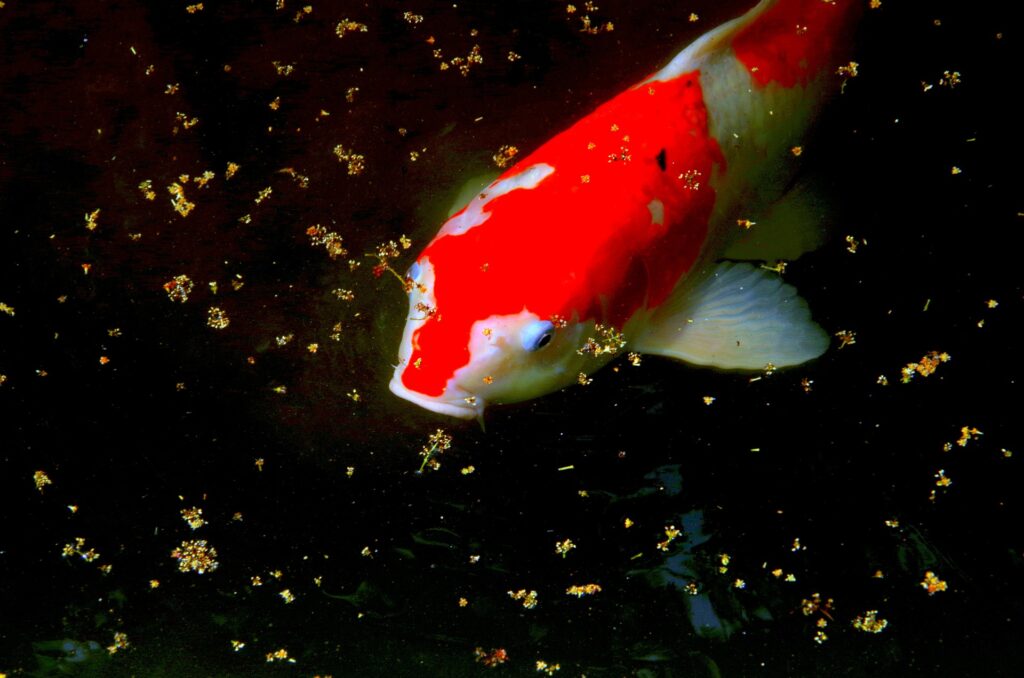
Mosquito Fish
Overview of Mosquito Fish
Mosquito fish, also known as Gambusia, are small freshwater fish that are popular for their ability to control mosquito populations. They are native to the southeastern United States and have been widely introduced to bodies of water for mosquito control purposes. Mosquito fish are highly adaptable and can withstand a wide range of environmental conditions.
Habitat Requirements
Mosquito fish can thrive in a variety of freshwater habitats, including ponds, lakes, ditches, and even aquariums. They are hardy fish that can tolerate both stagnant and flowing water with ease. Mosquito fish prefer environments with dense vegetation, as it provides them with hiding places and protects them from predation. They are also known to tolerate a wide range of water temperatures and can survive in both cold and warm water conditions.
Feeding Mosquito Fish
As their name suggests, mosquito fish have a natural appetite for mosquito larvae, which makes them an effective biological control method for mosquito populations. They also feed on other small insects, crustaceans, and algae. In pond environments, mosquito fish can supplement their diet with dry fish food or flakes, but their primary food source should come from natural prey found in the pond.
Maintenance and Care
Taking care of mosquito fish is relatively easy due to their hardy nature. They require minimal maintenance and can survive in various water conditions. However, it is still important to regularly monitor and maintain water quality in their habitat. This includes checking for proper pH levels, oxygenation, and ensuring that the water remains free from pollutants or harmful chemicals.
White Cloud Mountain Minnow
Overview of White Cloud Mountain Minnow
The White Cloud Mountain Minnow is a small, peaceful fish that is native to the streams of White Cloud Mountain in China. They are highly adaptable and can thrive in various aquatic environments, making them a popular choice for ponds in the USA. With their shimmering golden colors and active nature, White Cloud Mountain Minnows add a touch of beauty and liveliness to any pond.
Habitat Requirements
White Cloud Mountain Minnows prefer calm, well-oxygenated water with a temperature range of 60-72°F (15-22°C). They are tolerant of a wide range of water conditions but thrive in slightly acidic to neutral pH levels. This makes them compatible with many other fish species commonly found in ponds. Providing a well-planted pond with ample hiding spots and swimming space is important for their well-being.
Feeding White Cloud Mountain Minnow
White Cloud Mountain Minnows are omnivorous, feeding on a variety of foods. They will readily consume dry and frozen fish food, as well as live or frozen brine shrimp, daphnia, or bloodworms. It is recommended to feed them twice a day, providing them with an amount that they can consume within a few minutes. They also appreciate the occasional supplementation with live or frozen foods to promote their natural foraging instincts.
Maintenance and Care
Maintaining proper water quality is crucial for the health and well-being of White Cloud Mountain Minnows. Regularly test the water for ammonia, nitrite, nitrate, and pH levels to ensure optimal conditions. Water changes should be performed regularly to remove any accumulated waste or pollutants. Providing a natural and well-structured environment with hiding places and suitable plants is important for their mental and physical well-being.
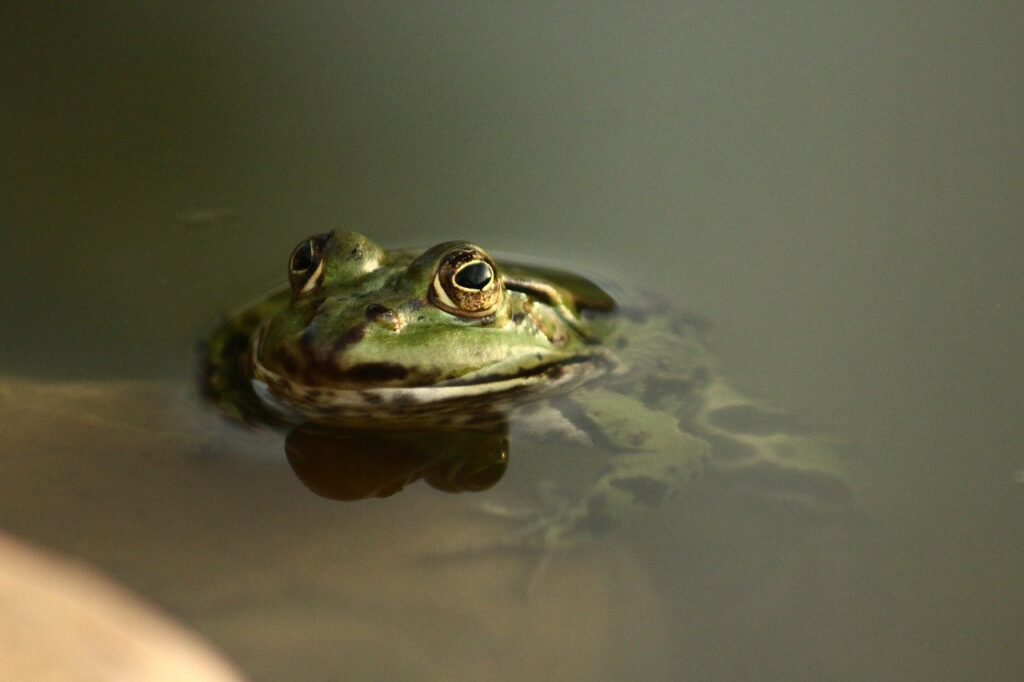
Guppies
Overview of Guppies
Guppies are one of the most colorful and popular fish species kept in ponds due to their vibrant colors, peaceful nature, and low maintenance requirements. They are small tropical fish, native to South America but have been widely distributed and domesticated in the USA. Guppies are known for their lively personalities and often display intricate and captivating patterns and colors.
Habitat Requirements
Guppies prefer warm water environments, with temperatures ranging between 72-82°F (22-28°C). They can tolerate a wide range of water conditions but require adequate filtration and aeration. Guppies enjoy an environment with plants and floating vegetation, as it offers shelter, security, and food sources for them. They also prefer a slightly acidic to neutral pH level for optimal health and breeding.
Feeding Guppies
Guppies are omnivorous and have a voracious appetite. They will consume a variety of commercially available fish food, including flakes, pellets, and freeze-dried or frozen foods. These foods should be well-balanced and provide a mix of proteins, vitamins, and minerals. Additionally, offering them occasional live or frozen foods, such as brine shrimp or bloodworms, will help simulate their natural feeding behavior and enhance their overall health.
Maintenance and Care
Taking care of guppies in a pond is relatively easy and requires minimal effort. Regular water quality testing is important to maintain a healthy environment for the fish, ensuring that ammonia and nitrate levels are kept low. Regular water changes and proper filtration are crucial to prevent the build-up of waste and maintain clean water. Additionally, regularly monitoring the pond for signs of disease or parasites is essential for early detection and treatment.
Popular Guppy Varieties
Guppies are highly sought after for their vibrant colors and intricate patterns. With selective breeding, numerous guppy varieties have been developed. Some popular guppy varieties include:
- Tuxedo Guppies: These guppies have a solid black body with colorful tails and fins.
- Cobra Guppies: Cobra guppies have a distinctive pattern that resembles a cobra’s hood, with vibrant colors on their tails and fins.
- Grass Guppies: Grass guppies have longer, flowing tails that resemble blades of grass, often in vibrant green hues.
- Moscow Guppies: Moscow guppies have a metallic shimmer to their bodies and come in a wide variety of colors.
- Delta Guppies: Delta guppies have triangular-shaped tails that flow beautifully in the water.
Guppies are a great choice for beginners and experienced pond enthusiasts looking to add a splash of color to their ponds.
Sunfish
Overview of Sunfish
Sunfish are a diverse group of freshwater fish that are native to North America. They are known for their vibrant colors, diverse patterns, and unique personalities. Sunfish belong to the Centrarchidae family, which includes popular species such as bluegill, pumpkinseed, and largemouth bass. While they are commonly found in lakes, rivers, and streams, they can also be kept in ponds in the USA.
Habitat Requirements
Sunfish thrive in a variety of freshwater habitats, ranging from calm ponds to flowing rivers. They prefer water temperatures between 70-85°F (21-29°C) and require a well-oxygenated environment. Sunfish are highly adaptable and can tolerate a wide range of water conditions. However, providing ample hiding spots, aquatic vegetation, and suitable water depths is important to meet their natural requirements.
Feeding Sunfish
Sunfish are opportunistic feeders and have a varied diet. They primarily consume insects, crustaceans, and small fish but will also eat vegetation and detritus. In a pond environment, sunfish can be fed a variety of commercially available pellets or flakes designed for omnivorous fish. Additionally, live or frozen foods such as earthworms, crickets, or small shrimp can be given as occasional treats, providing them with essential nutrients and promoting their natural foraging behavior.
Maintenance and Care
Taking care of sunfish requires regular monitoring and maintenance to ensure their well-being. Regularly testing water quality parameters such as temperature, pH, and ammonia levels is important to maintain optimal conditions for the fish. Adequate filtration and aeration should be provided to keep the water clean and well-oxygenated. Inspecting the pond for signs of disease, parasites, or aggression among fish is crucial for early detection and appropriate action if needed.
Popular Sunfish Species
Sunfish encompass numerous species, each with its own unique characteristics. Some popular sunfish species kept in ponds include:
- Bluegill: Bluegill sunfish are known for their blue-green coloration and adaptability to ponds. They are highly sought after for their striking appearance and sport fishing qualities.
- Pumpkinseed: Pumpkinseed sunfish feature beautiful pumpkin-like colors, with vibrant orange, red, and blue markings on their sides.
- Redear Sunfish: Redear sunfish are characterized by their reddish ear flap and are highly prized for their ability to control snail populations in ponds.
- Longear Sunfish: Longear sunfish have long, extending gill plates and vibrant colors, making them popular among pond enthusiasts.
Sunfish are a great addition to ponds, as they provide beauty and diversity to the aquatic ecosystem while also offering recreational opportunities, such as fishing.
Catfish
Overview of Catfish
Catfish are a group of freshwater fish that are native to North America and known for their smooth, scaleless bodies, barbels, and whisker-like structures called “whiskers.” They are highly sought after for their delicious meat and adaptability to a variety of water conditions. Catfish are bottom-dwelling fish and are often found in rivers, lakes, and ponds in the USA.
Habitat Requirements
Catfish can tolerate a wide range of water conditions and are highly adaptable. They prefer warmer water temperatures between 75-85°F (24-29°C) and thrive in environments with ample cover, such as rocks, logs, or submerged vegetation. Catfish also require adequate oxygen levels, so ensuring good water circulation and providing aeration is crucial for their well-being.
Feeding Catfish
Catfish are opportunistic feeders and primarily consume bottom-dwelling organisms, including insects, crustaceans, and smaller fish. In pond environments, catfish can be fed a variety of commercially available sinking pellets or flakes specifically formulated for their dietary needs. Additionally, they will eagerly consume live or frozen foods such as earthworms, shrimp, or small fish. It is important to feed them an appropriate amount and avoid overfeeding to prevent water pollution and obesity.
Maintenance and Care
Taking care of catfish in a pond requires some specific considerations. Regular water quality testing is essential, as catfish are more susceptible to poor water conditions compared to other fish species. Maintaining proper filtration, water circulation, and aeration help keep the water clean and oxygenated. Additionally, regularly inspecting the pond for signs of disease or parasites and providing adequate cover for the catfish are crucial for their overall health and well-being.
Popular Catfish Species
Catfish encompass numerous species, each with its own unique characteristics. Some popular catfish species kept in ponds include:
- Channel Catfish: Channel catfish are widely known for their delicious meat and sport fishing qualities. They have a slender body and deeply forked tail, making them excellent swimmers.
- Blue Catfish: Blue catfish are prized for their larger size and are often targeted by anglers. They have a bluish-gray body and a deeply forked tail.
- Flathead Catfish: Flathead catfish have a flat head and a long, slender body. They are known for their ambush predation style and can grow to be quite large.
- Bullhead Catfish: Bullhead catfish are smaller in size compared to other catfish species. They have a rounded body and are known for their hardiness and ability to adapt to various environments.
Keeping catfish in a pond can be a rewarding experience, providing both aesthetic appeal and the opportunity for recreational fishing.
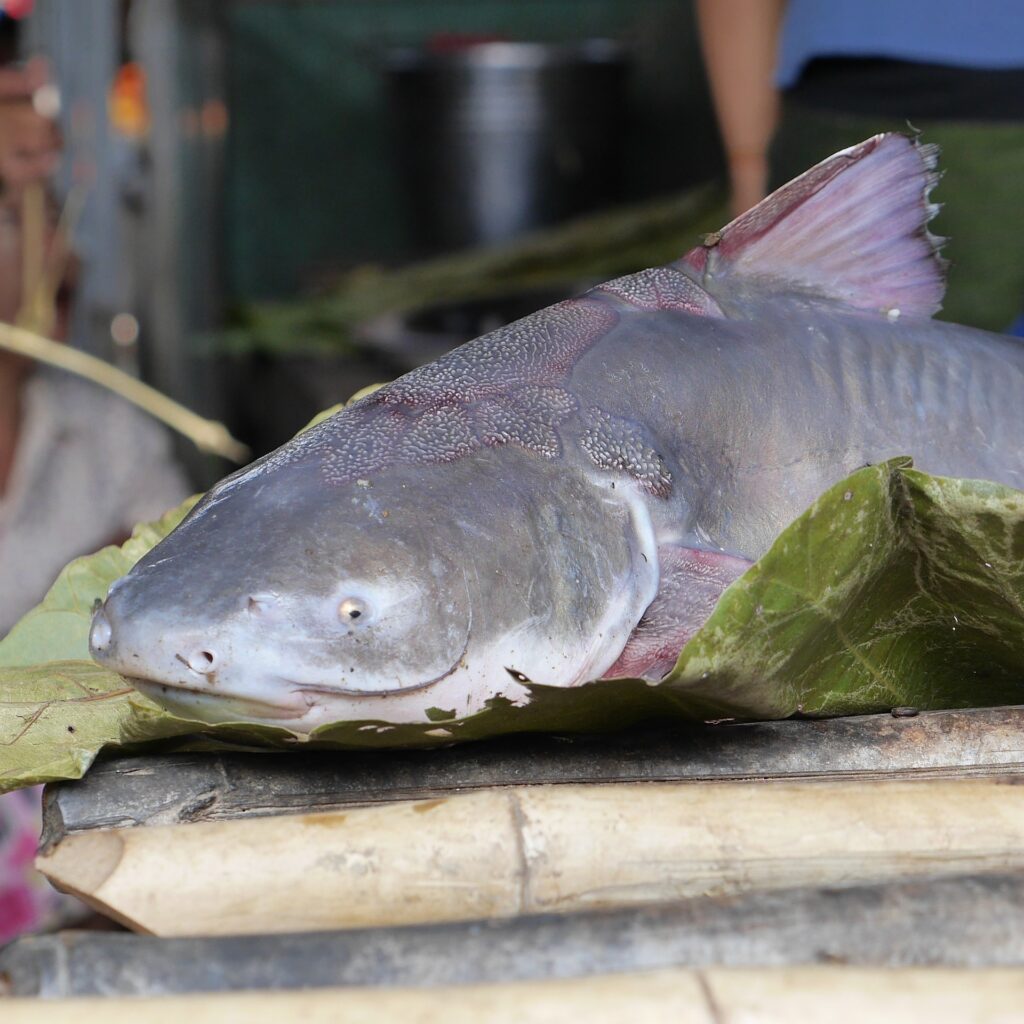
Bluegill
Overview of Bluegill
Bluegill is a popular sunfish species native to North America, known for its beautiful blue-green coloration and sport fishing qualities. They are highly sought after for their delicious meat and adaptability to pond environments. Bluegill are a popular choice for stocking ponds in the USA due to their hardiness, vibrant colors, and the excitement they bring to anglers.
Habitat Requirements
Bluegill thrive in freshwater environments such as ponds, lakes, and slow-moving rivers. They prefer water temperatures between 65-90°F (18-32°C), with optimal growth occurring between 77-86°F (25-30°C). Bluegill are social fish and thrive in groups, so providing adequate space and hiding spots, such as submerged vegetation or artificial structures, is important for their well-being.
Feeding Bluegill
Bluegill are opportunistic feeders and primarily consume insect larvae, small worms, and small fish. In pond environments, they can be fed a variety of commercially available floating or sinking pellets specifically formulated for their dietary needs. Additionally, they will eagerly consume live or frozen foods such as earthworms, crickets, or small shrimp. It is recommended to feed them an appropriate amount, ensuring they can finish the food within a few minutes, to avoid overfeeding and water pollution.
Maintenance and Care
To maintain healthy bluegill populations in a pond, regular monitoring and maintenance are important. Regular water quality testing helps ensure optimal conditions for the fish, including temperature, pH levels, ammonia, nitrite, and nitrate levels. Providing proper filtration and aeration is essential to maintain good water quality. Regularly inspecting the pond for signs of disease, parasites, or aggression among fish is crucial for early detection and appropriate action if needed.
Mollies
Overview of Mollies
Mollies are small tropical fish that are native to the coastal waters of Central and South America. They are highly adaptable and can thrive in both freshwater and brackish water environments, making them a popular choice for ponds. Mollies come in a variety of colors, including black, silver, and gold, and are known for their active nature and ease of care.
Habitat Requirements
Mollies prefer a well-structured pond environment with plenty of hiding spots, aquatic plants, and rocks. They can tolerate a wide range of water conditions but thrive in slightly alkaline to neutral pH levels. Mollies are also sensitive to temperature fluctuations and prefer water temperatures between 72-82°F (22-28°C). Providing proper filtration and aeration is important to maintain clean and oxygen-rich water for their well-being.
Feeding Mollies
Mollies are omnivorous and have a varied diet. In the wild, they primarily feed on algae and small invertebrates. In a pond environment, mollies can be fed a variety of commercially available fish food, including flakes, pellets, and freeze-dried or frozen foods. These foods should provide a balanced diet, containing a mix of proteins, vitamins, and minerals. Additionally, offering them occasional live or frozen foods, such as brine shrimp or bloodworms, will help stimulate their natural foraging behavior and enhance their overall health.
Maintenance and Care
Taking care of mollies in a pond requires regular maintenance to ensure their well-being. Regularly monitoring water quality parameters, such as temperature, pH, ammonia, and nitrate levels, is important to maintain optimal conditions for the fish. Adequate filtration and water circulation should be provided to keep the water clean and well-oxygenated. Regular observation for signs of disease, parasites, or aggression among fish is essential for early detection and appropriate action if needed.
Popular Molly Varieties
Mollies come in a variety of colors, patterns, and fin shapes, making them a favorite among pond enthusiasts. Some popular molly varieties include:
- Short-Fin Molly: These mollies have a standard body shape, short fins, and come in a variety of colors, including black, silver, and gold.
- Balloon Molly: Balloon mollies have a unique body shape, with a rounded abdomen and a hump on their back. They are available in various colors and patterns.
- Sailfin Molly: Sailfin mollies have elongated dorsal and anal fins, resembling a sail. They are known for their graceful swimming patterns and vibrant colors.
- Dalmatian Molly: Dalmatian mollies have a white body with black spots, resembling the coat pattern of a Dalmatian dog.
Mollies are a great addition to ponds, bringing beauty, diversity, and activity to the aquatic ecosystem.
Rainbow Trout
Overview of Rainbow Trout
Rainbow trout are a highly prized species known for their vibrant colors, fast growth, and excellent sport fishing qualities. They are native to North American rivers and streams but have been widely introduced as a game fish in many ponds and lakes in the USA. Rainbow trout require cool, well-oxygenated water and are a popular choice for stocking ponds for fishing purposes.
Habitat Requirements
Rainbow trout prefer cool, clean, and well-oxygenated water with temperatures between 50-60°F (10-15°C). They require a pond depth of at least 3-4 feet and benefit from a mix of submerged vegetation and rocky structures. Rainbow trout are also sensitive to sunlight, so providing shade through aquatic plants or artificial covers is essential for their well-being.
Feeding Rainbow Trout
Rainbow trout are carnivorous and primarily feed on a diet of insects, small fish, and crustaceans in their natural habitat. In pond environments, they can be fed a variety of commercially available fish food, including pellets or flakes specifically formulated for trout. Additionally, offering them occasional live or frozen foods, such as insects or small fish, will help simulate their natural feeding behavior and enhance their growth and overall health.
Maintenance and Care
Maintaining healthy rainbow trout populations in a pond requires dedicated attention and regular maintenance. Regular water quality testing is important to monitor temperature, oxygen levels, pH, ammonia, nitrite, and nitrate levels. Providing proper filtration and aeration is crucial to maintaining clean and well-oxygenated water. Inspecting the pond for signs of disease or parasites, monitoring feeding habits, and adjusting their diet as needed are all important factors in their care.
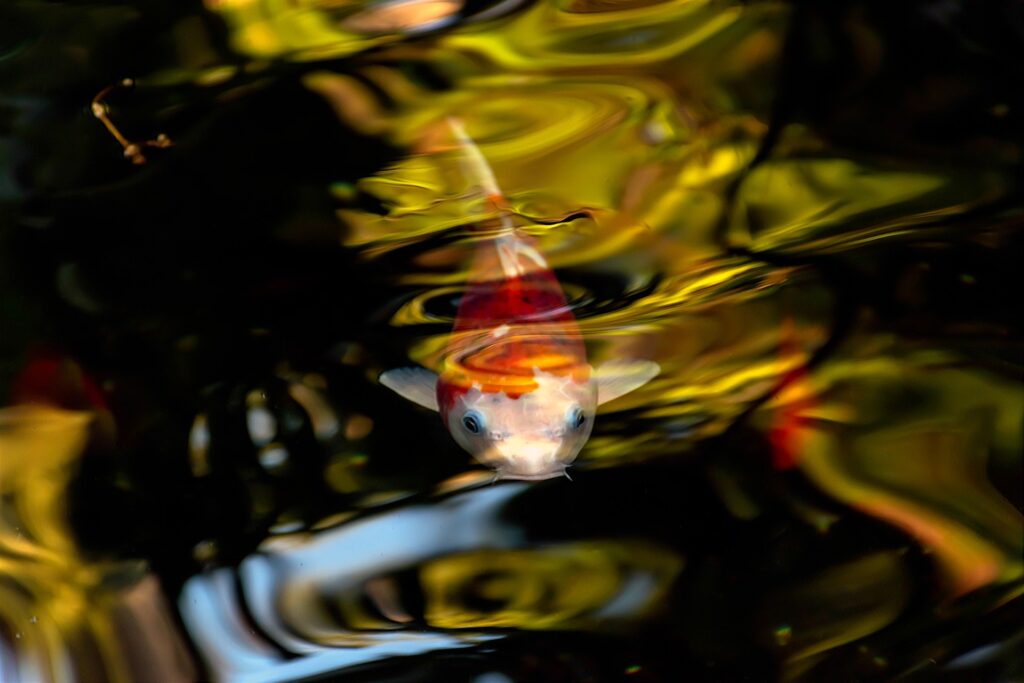
What Are The Easiest Fish To Keep In A Pond In USA
In conclusion, when it comes to choosing fish for your pond, there are plenty of options to consider. Each fish species has its own unique characteristics, habits, and care requirements. Whether you are looking for vibrant colors, low maintenance, or excellent sport fishing qualities, there is a fish species that suits your preferences.
Remember to provide adequate shelter, maintain proper water quality, and monitor the health of your fish regularly. With proper care and attention, your pond can become a thriving aquatic ecosystem that brings beauty, serenity, and enjoyment to your outdoor space.
If you need more information about your fish ponds, take a look at ‘ What Is The Ideal Pond Ecosystem‘.
Happy pond keeping!
